Kathryn Cowen‘s paintings combine weird sci fi, deep sea exploration and a battle between abstraction and figuration. Andrew Frost spoke with her on the eve of her new show at Redfern’s 107 gallery…
Top: Kathryn Cowen, #otherworlds, 2017, ultraviolet light, posca pen, acrylic, fluorescent and aerosol paint on board, 1.5 x 2m, daylight view. Bottom: #otherworlds, ultraviolet view
Andrew Frost: The ideas of past and the present are ideas that have been in your work for awhile now, could you talk a bit about this notion of temporality and how it plays through the kinds of images your produce?
Kathryn Cowen: Conceptually I am interested in time, space and memory. I am curious about our perception of time and how this relates to scientific theories that seek to explain time and space. The literature that most excites my imagination are the stories that involve shifts in time and aspects of reality. I collect images from a variety of sources, often figures from historical photographic archives. The idea of photography as a repository of stored memory is one that intrigues me; that an image can record a moment in time, a moment in history; but that it can also record some intangible aspect of the subject’s inner life which can be felt, but is ultimately unknowable. As Rebecca Solnit put it “photographs are supposed to serve as anchors of the past, but they are as unstable as everything else that constitutes reality…they are phantasms and fictions that metamorphose continually in accordance with the needs of the present”.
Kathryn Cowen, Mnemosyne’s Garden, 2016-2018, acrylic, oil, aerosol and fluorescent paint on canvas, 167.5 x 167.5cm
The figures I use in my work are removed and displaced from their original context. They are drawn into a new environment to become characters in a different tale. It is their ability to retain some aspect of their past that allows me to play with the perception of time and place within the images I create. I work towards a narrative that is suggested but not defined, and an ambiguous space that points towards something ‘other’.
Thanks to Tony Twigg and curator Anie Nheu I recently had the fantastic opportunity to play and experiment while developing the work #otherworlds for SLOT window gallery on Botany Road in Redfern. Through the use of fluorescent paint and ultraviolet lighting I was able to embrace time in a different way. This one large scale painting became two, transforming through the medium of light, morphing from day to night. In my current exhibition Future Past at 107, the painting ‘Mnemosyne’s Garden’ embodies time through the the materiality of the surface. This painting was made over a number of years (2016 – 2018) and went through numerous manifestations. At one stage she too fluoresced under ultraviolet light, but the surface did not stand up in the daylight and so became submerged under layers of oil. The figure walking with her pods disappeared for a while and then returned, and the environment evolved and grew over time much like a garden.
Kathryn Cowen, Dreaming of Gold, 2017, acrylic, oil and aerosol paint on board, 20 x 25cm
Kathryn Cowen, Space Rangers, 2013, acrylic and ink on canvas, 25.4 x 35.6cm
AF: Looking back at your older work, you have a love of an archival image, from drawings with elements presumably taken from old photos and illustrations, to the works you did during a residency at Hill End. What attracts you to an image that makes you put it in a work?
KC: I collect images for my work randomly and often select them instinctively. They are often found through chance. I was initially attracted to using photographs as a source of inspiration through the discovery of a familial archive of stereoscopic slides from the 1950s. It was the untold stories that attracted me to these beautiful images that traversed the world. Upon reflection, it seems that the untold or unknown continues to influence my selection of images, and there is often something odd or uncanny about a figure, dwelling or place that captures my imagination. I am attracted to the accoutrements of science and many of the figures have appendages such as masks, headwear or eye wear that facilitate an exploration of the physical, inner or more abstract aspects of the world. I was recently reminded of the notion of synchronicity which was developed by the
psychiatrist Carl Jung and the theoretical physicist Wolfgang Pauli. This idea describes acausally connected events, which the observer experiences as having a meaningful connection on the basis of his or her subjective situation, as a meeting point of internal and external reality. Maybe synchronicity is at play in my attraction to an image and the way it sometimes finds itself into my work.
Kathryn Cowen, Pod, 2015, ink, acrylic, polyurethane resin and fluorescent paint on canvas, 20 x 20cm
Kathryn Cowen,See Man, 2015, ink, acrylic, polyurethane resin and fluorescent paint on canvas, 20 x 20cm
AF: There’s an interesting correspondence in your work to photograph, but also to the moving image. Many of the works, when seen in the context of the body of work when they were made, look a lot like closeups, or details of a bigger image. Do you think about the work in terms of that kind of montage, or in a relational way?
KC: I do consider the works in a series as moments in a non linear narrative. It is true, they could be viewed somewhat like stills in a film reel. They form parts of a larger whole. My intention is to invite the viewer to make free associations based on the
juxtapositions created through the collection of random imagery. The viewer can construct alternative meanings from the way they choose to sequence the moments presented. In many ways I think the works that formed the series Tall Tales and True (2013) and The Faraway Nearby (2015) were ‘closeups’ or ‘details’ in the sense that they were leading to the large work ‘Garden of Wonder’ which features in my current show Future Past at 107.
Kathryn Cowen, Garden of Wonder, 2015-2017, acrylic, oil and fluorescent paint on canvas, 115 x 230cm
AF: I was very taken by the ‘hero’ image ‘Garden of Wonder’ in your new exhibition. It has a playful quality in the way it quotes the classic science fiction image of the explorer, maybe on another planet, perhaps on the bottom of the sea, but it also seems to have a sense of menace too. What was your intention with that picture? And how does it relate to #otherworlds?
KC: ‘Garden of Wonder’ began through stumbling across an image of Cactus Country in rural Victoria. I have always loved the sculptural forms of cacti and succulents and could see the possibilities for creating a world for the deep sea diver in his vintage helmet to inhabit and explore. Through the use of heightened colour and loose abstracted mark making the landscape became suggestive of somewhere else and it seemed natural to connect the diver to the environment via his oxygen hose, as incongruous as this is in actuality. It is the conduit that connects his inner world to the outer.
There is always an element of darkness in my work, maybe because it is partly dealing with the unknown. I do try to balance this with the light, whether it is through a playful use of paint or the type of figure or dwelling that features in the work. I wasn’t necessarily intending to make an environmental comment with ‘Garden of Wonder’, but the work has been read by some as apocalyptic given the times we live in. I am open to varied interpretations.
#otherworlds evolved from ‘Garden of Wonder’. I began to explore the use of fluorescent paint and ultra violet light in the development of the earlier work, but couldn’t resolve some of the technical issues of the medium at the time. The environment depicted in #otherworlds is related to that of ‘Garden of Wonder’, but this time the pathway into the space leads to a pod house.The inhabitant of the dwelling meets her visitor at the threshold and it is unclear whether they intend to retreat or explore. The invitation is open either way. The use of the fluorescent paint and ultraviolet lighting was an opportunity to exaggerate and amplify the otherwordliness of the space presented and also offer a more tangible vehicle for
transport should the viewer wish to embark.
Kathryn Cowan, Gathering Into Being, 2015, ink, acrylic, polyurethane resin and oil medium on canvas, 70 x 70cm
AF: Can you talk a bit about how you work with the surface in your pictures? There’s an interesting approach to attraction – when you get down to details its almost like a battle between figuration and abstraction – sometimes the abstract elements seem to almost overwhelm the image.
KC: I am very interested in the battle between figuration and abstraction. The concepts and ideas that I am interested in are abstract, and the intention is not to recreate a realistic rendering of the world. I am a painterly painter. The physicality of the paint and the mark making are an acknowledgement of the alchemy and the materiality of the medium and the process. In the past I have created the environments for my images through pouring paint with intent, but embracing chance. The figure would then look to inhabit this abstracted space. In recent work I have been more considered and deliberate in constructing the environment. Despite this, the visual and perceptual oscillation between the materiality of paint on the surface and the pictorial space implied is something I have sought to retain.
Kathryn Cowen’s Future Past, at 107, 14-25 March 2018, 107 Redfern St Redfern NSW. See more: Kathryn Cowan
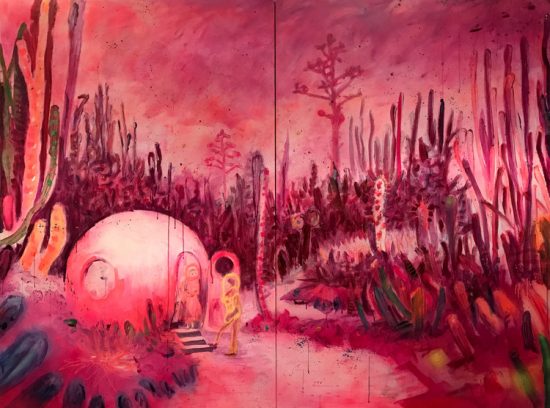
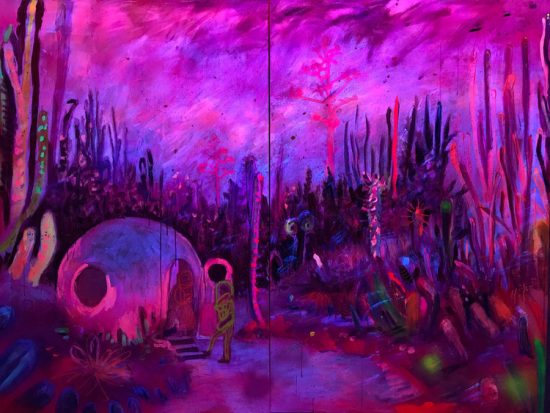
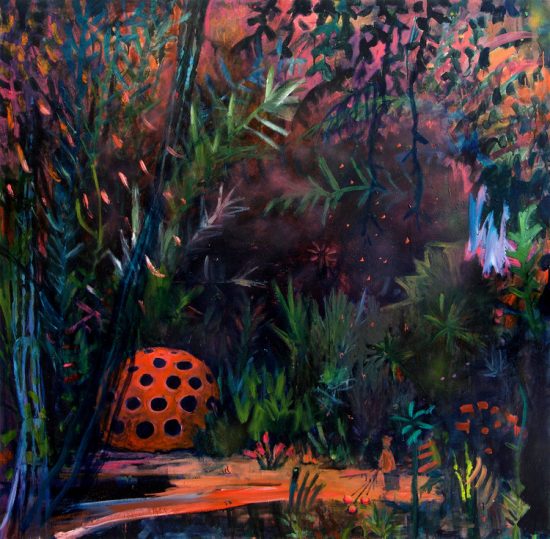
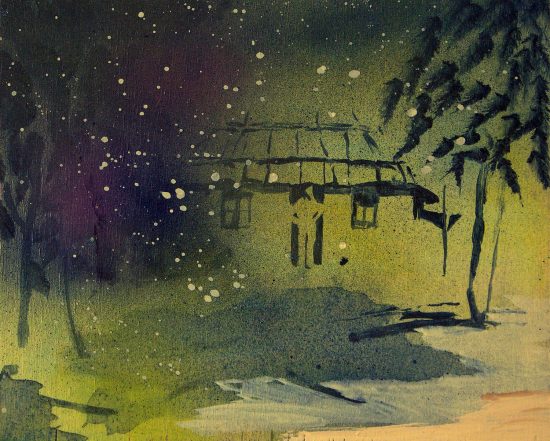
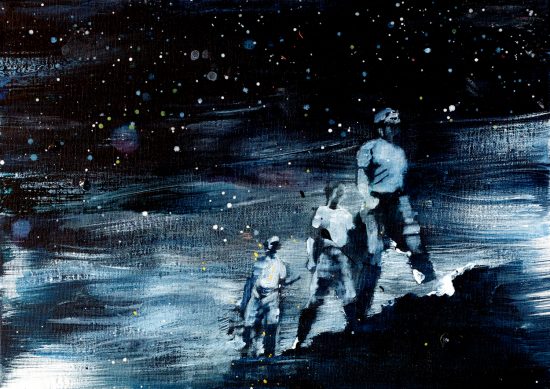
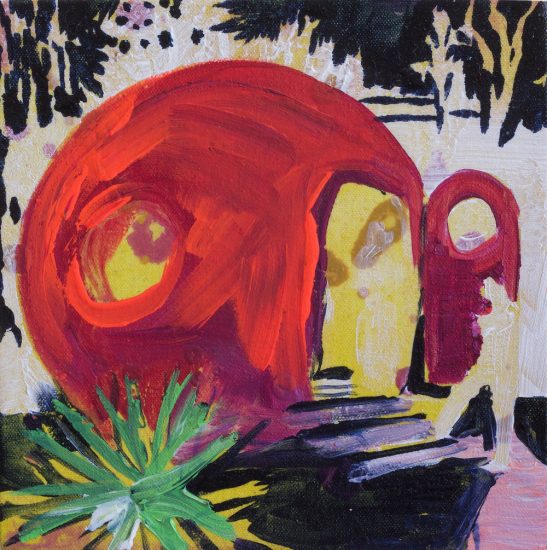
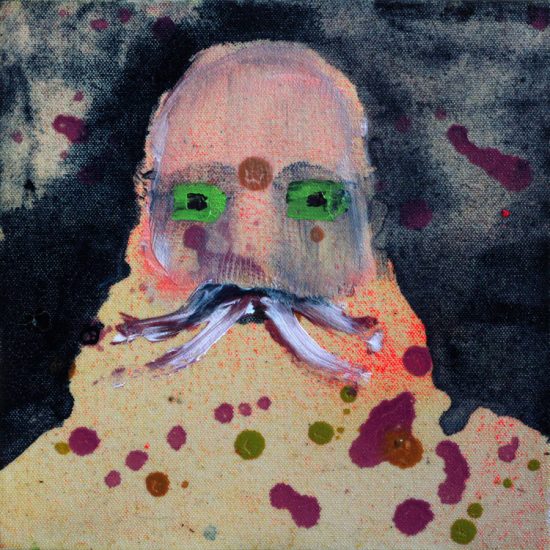
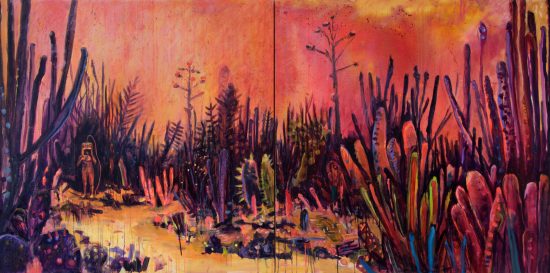
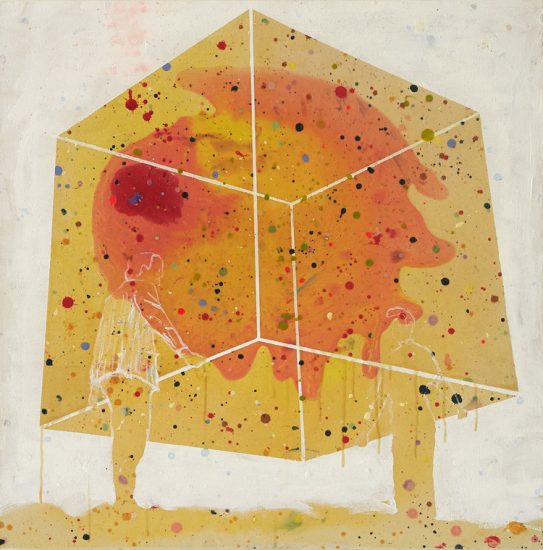

As an abstract artist l enjoyed reading this post and found it very insightful!
Pingback: It’s Archi time, Bell in Venice, space art, a living wage for artists + more! – The Art Life